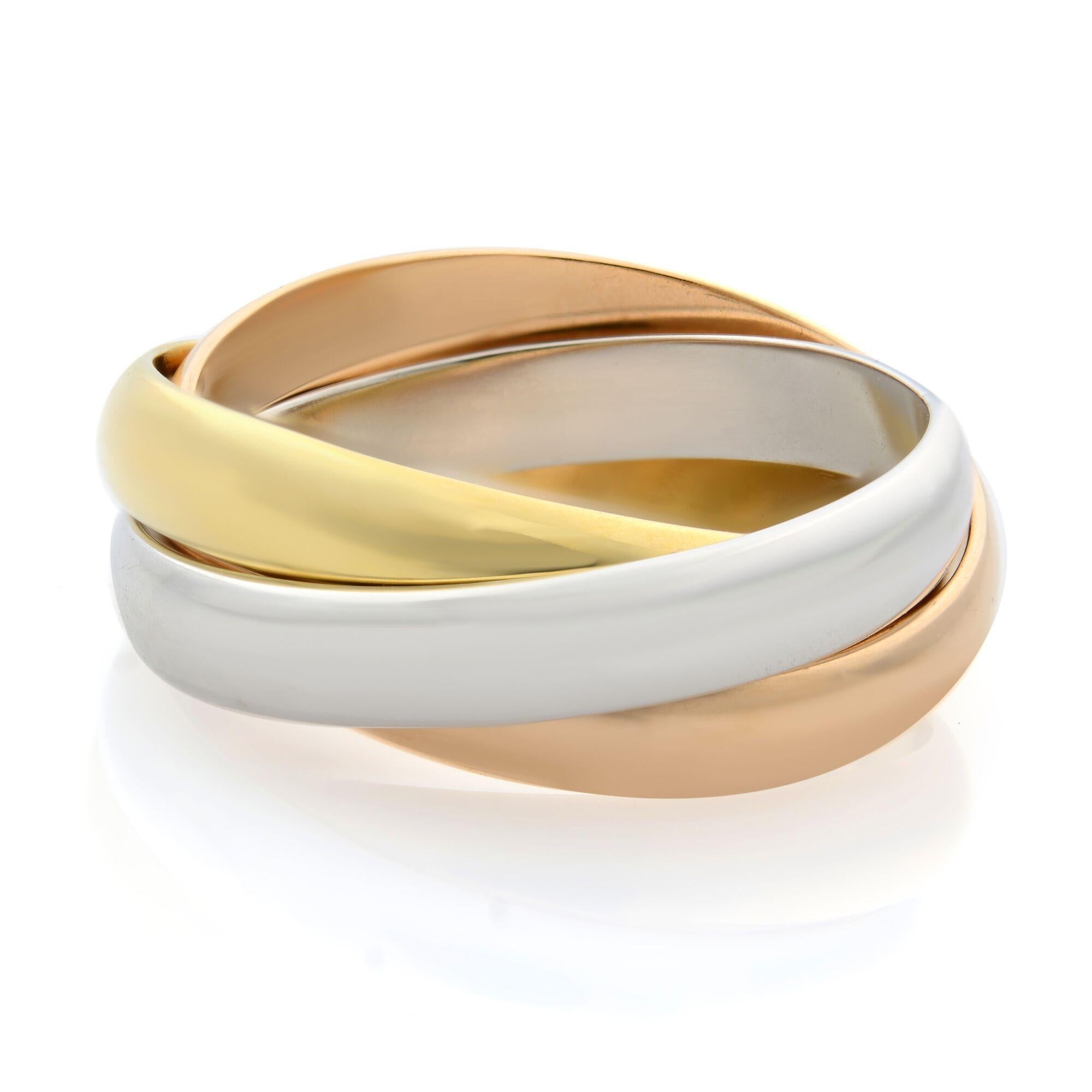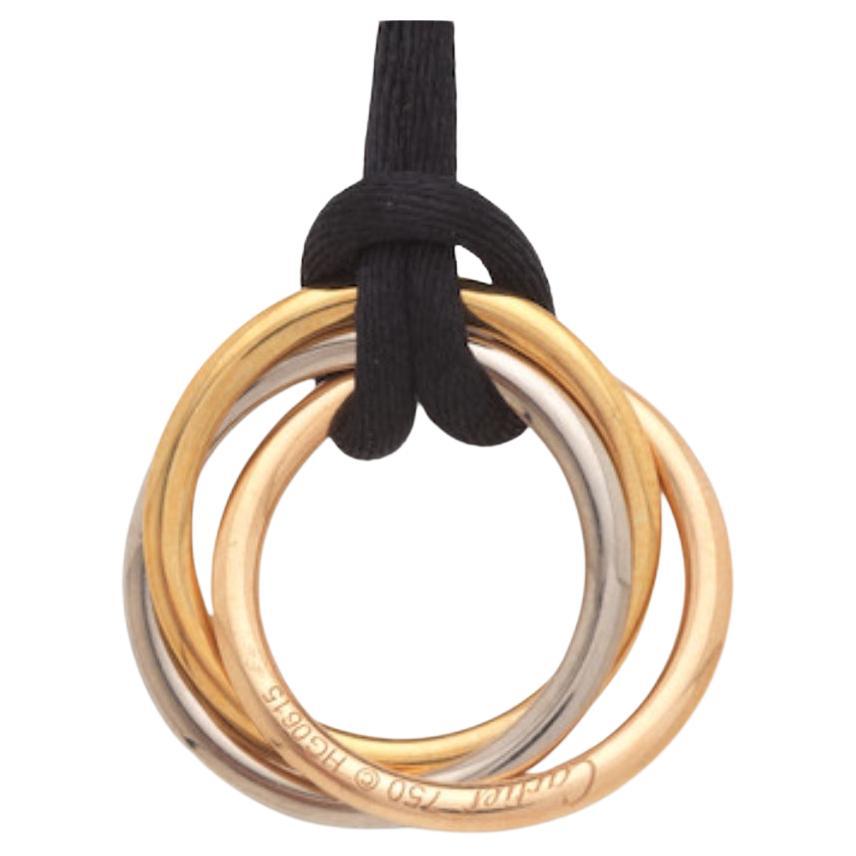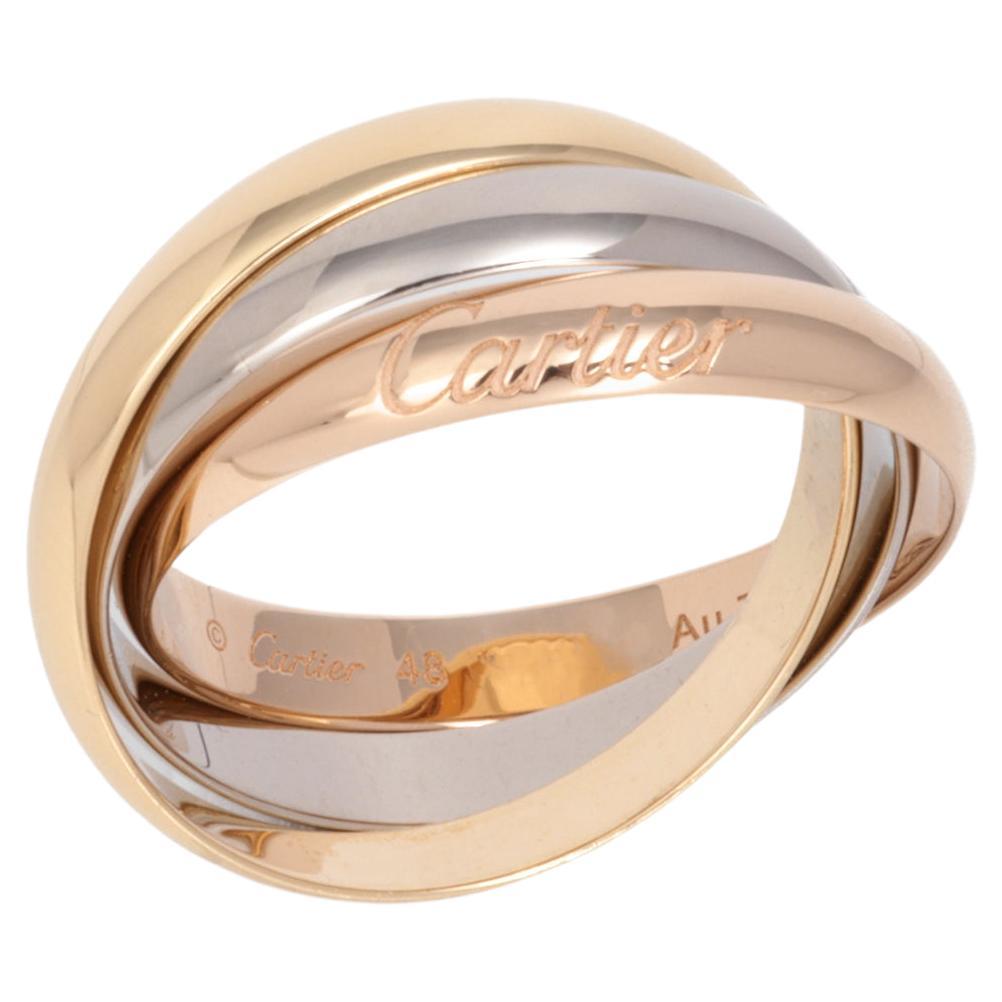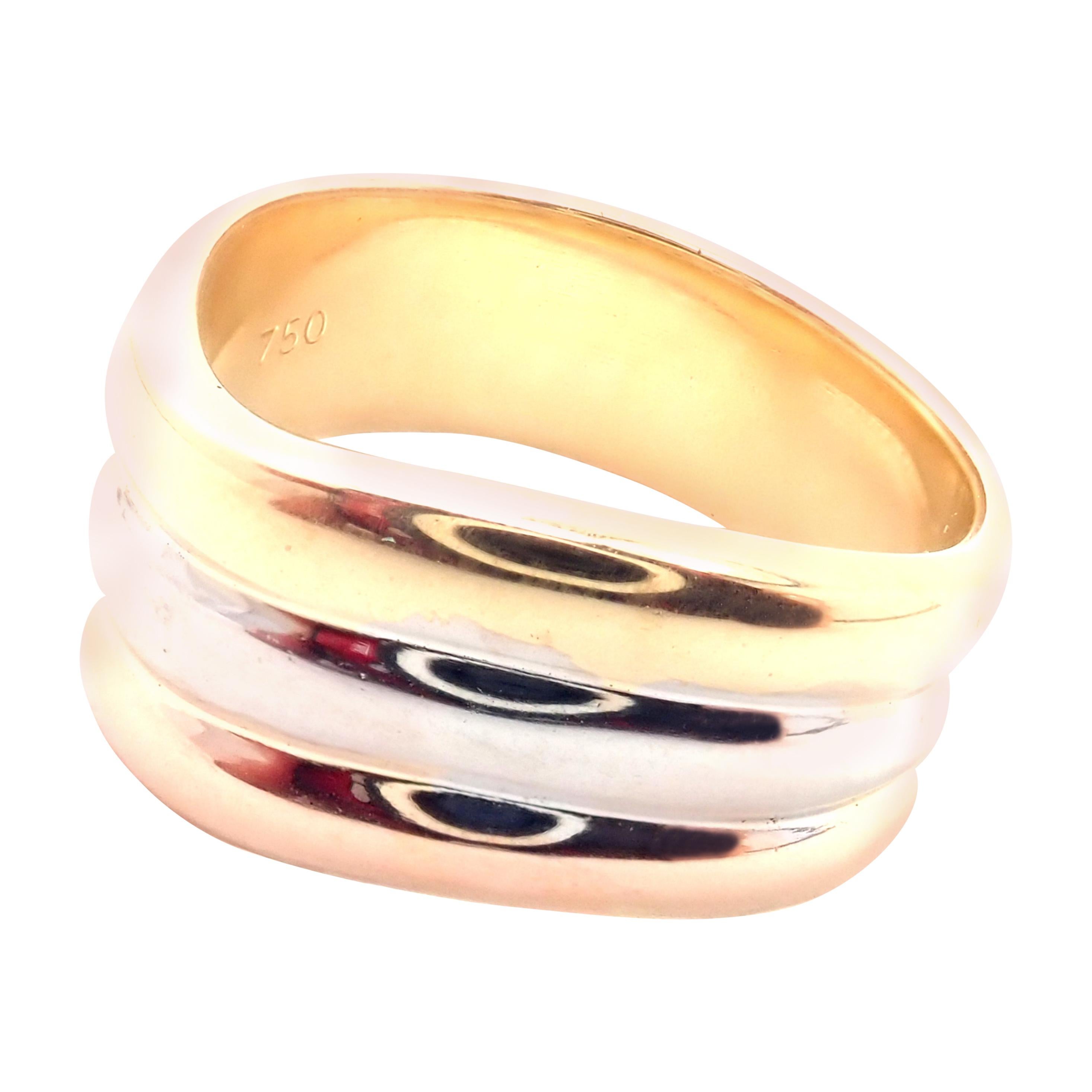

Trinity CollectionBy Cartier
Louis Cartier (1875–1942), the grandson of the founder of legendary French jewelry house Cartier, designed the simple and minimal Trinity collection during a period in which most creatives favored maximalism and adornment.
Created in 1924, at the peak of the Art Deco movement, the Trinity ring, Trinity necklace and Trinity bracelet are marvelous in their simplicity, as each piece comprises only three 18-karat bands. Aside from variations that include diamond embellishments, the original design’s only decorative element is the signature Cartier stamp. And while the designs may be minimal in appearance, they are flush with meaning.
Each of the three bands is a different shade of gold, which represents the different stages of a relationship. The white gold represents friendship, the pink gold represents love and the yellow gold represents fidelity. As many jewelry collections over the years have enjoyed a spike in popularity owing to association with prominent figures in the arts and in royalty, the Trinity collection quickly rose to fame after French poet and filmmaker Jean Cocteau — a friend of Louis Cartier’s — was seen sporting the ring on his pinkie finger. In fact, it is rumored that Cartier originally designed the ring specifically for Cocteau.
Cartier has offered various iterations of the classic Trinity design in order to meet demand. From outfitting the bands in gemstones and changing their shape and style or adding a wedding band, the Trinity collection has evolved and broadened in scope since its inception, although the original is perhaps one of the brand’s most recognizable pieces to date.






